Abstract
As an estimate of their virulence, the ability of ovine, bovine, canine, feline and simian ureaplasma strains to cause mastitis in the ovine mammary gland was investigated. Five ovine ureaplasmas produced a clinical mastitis. Broth cultures of seven bovine ureaplasmas were unable to infect the ovine gland, but two of these strains plus one other were able to do so following passage through the bovine udder. One of two canine strains and a feline strain both caused mastitis, but the simian strain persisted at low titre for only 5 days post-inoculation in one of the two ewes tested.
Full text
PDF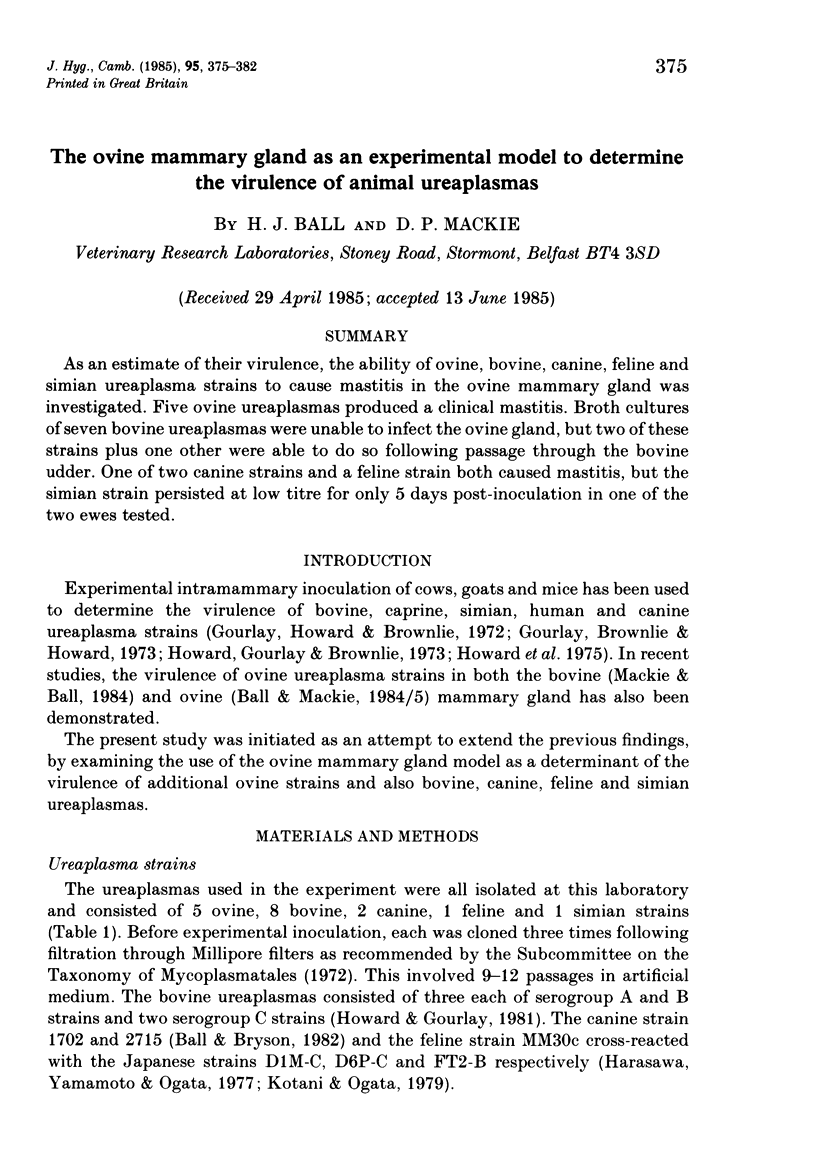
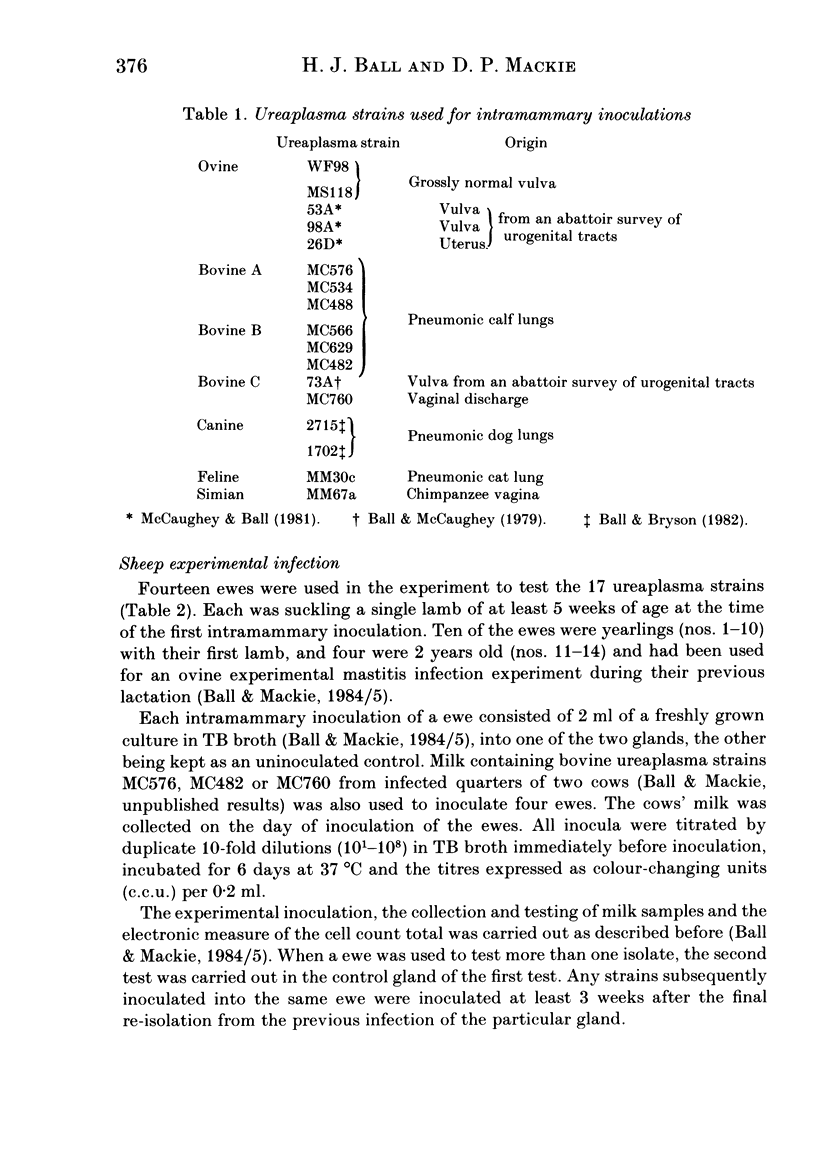
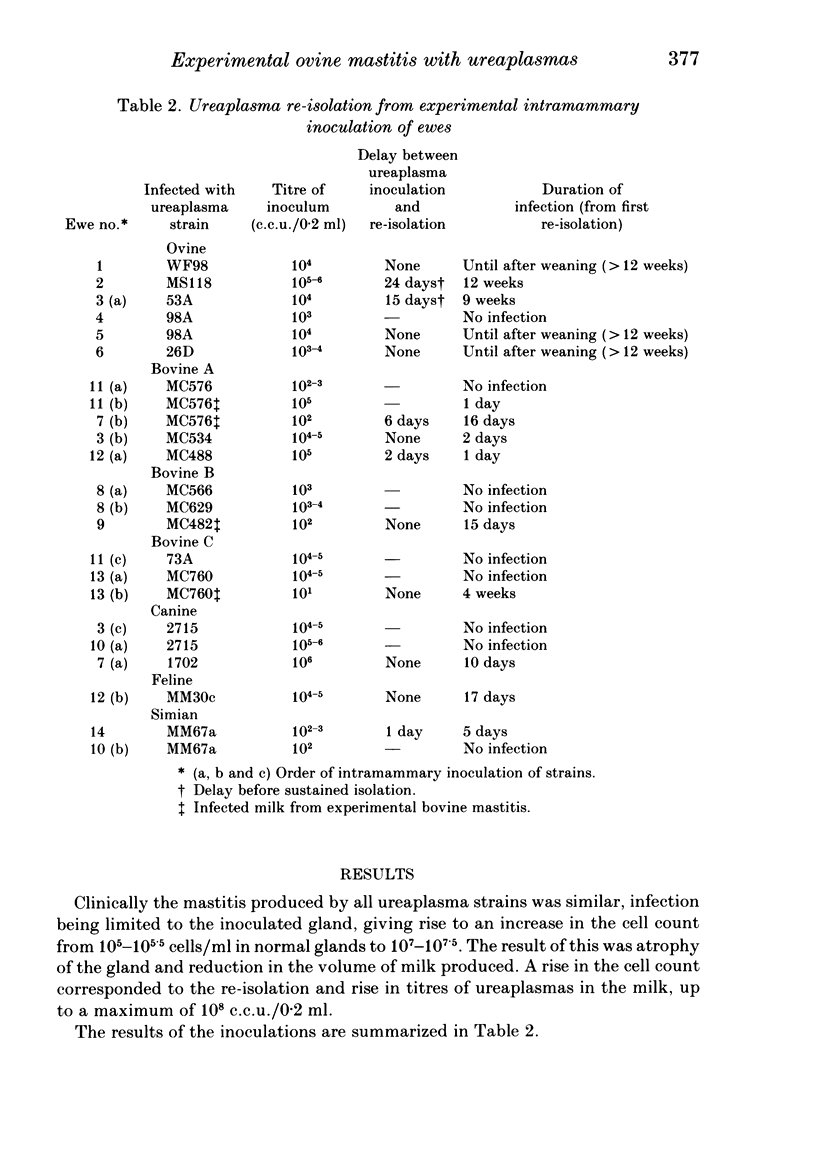
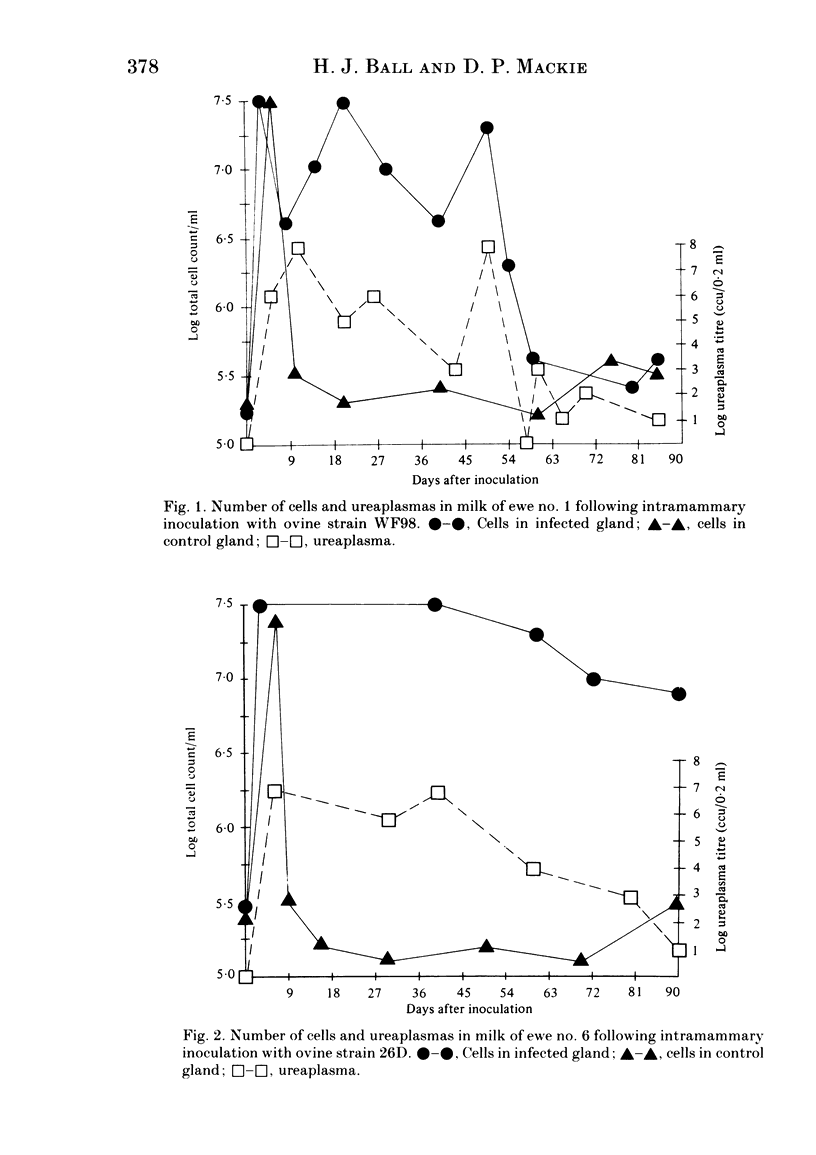
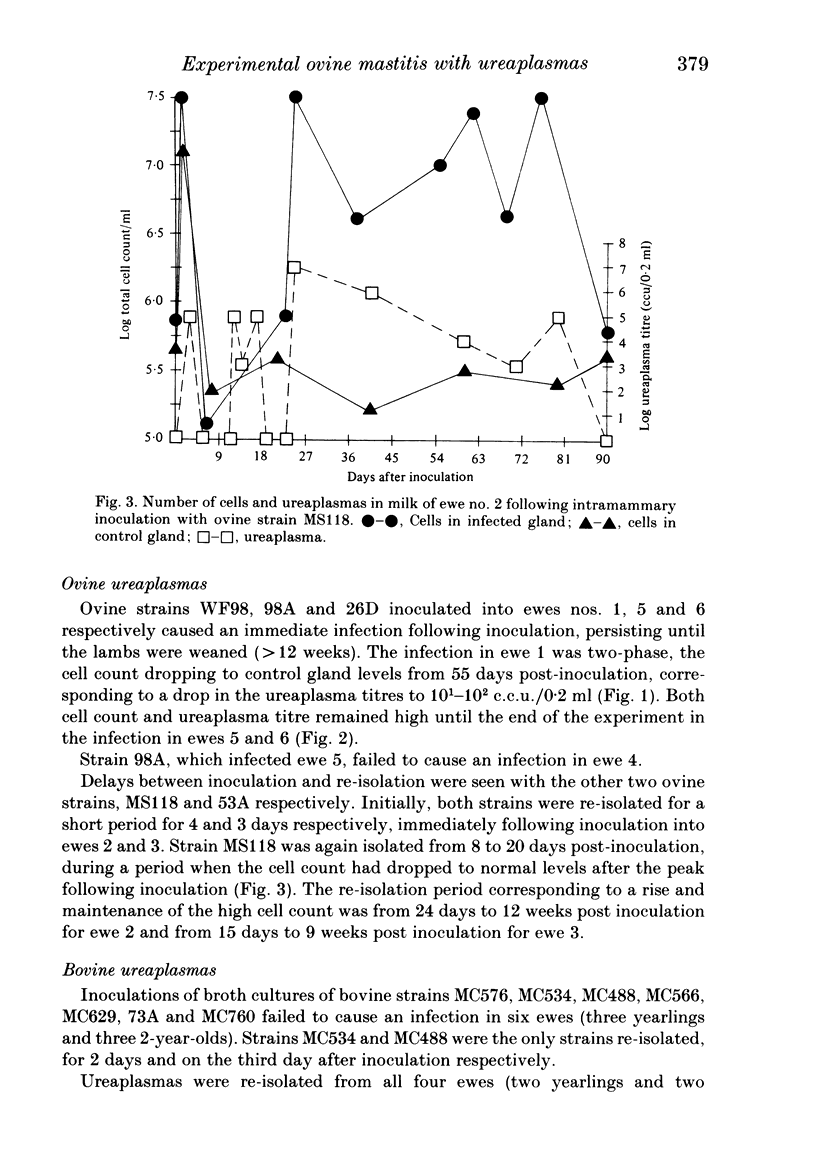
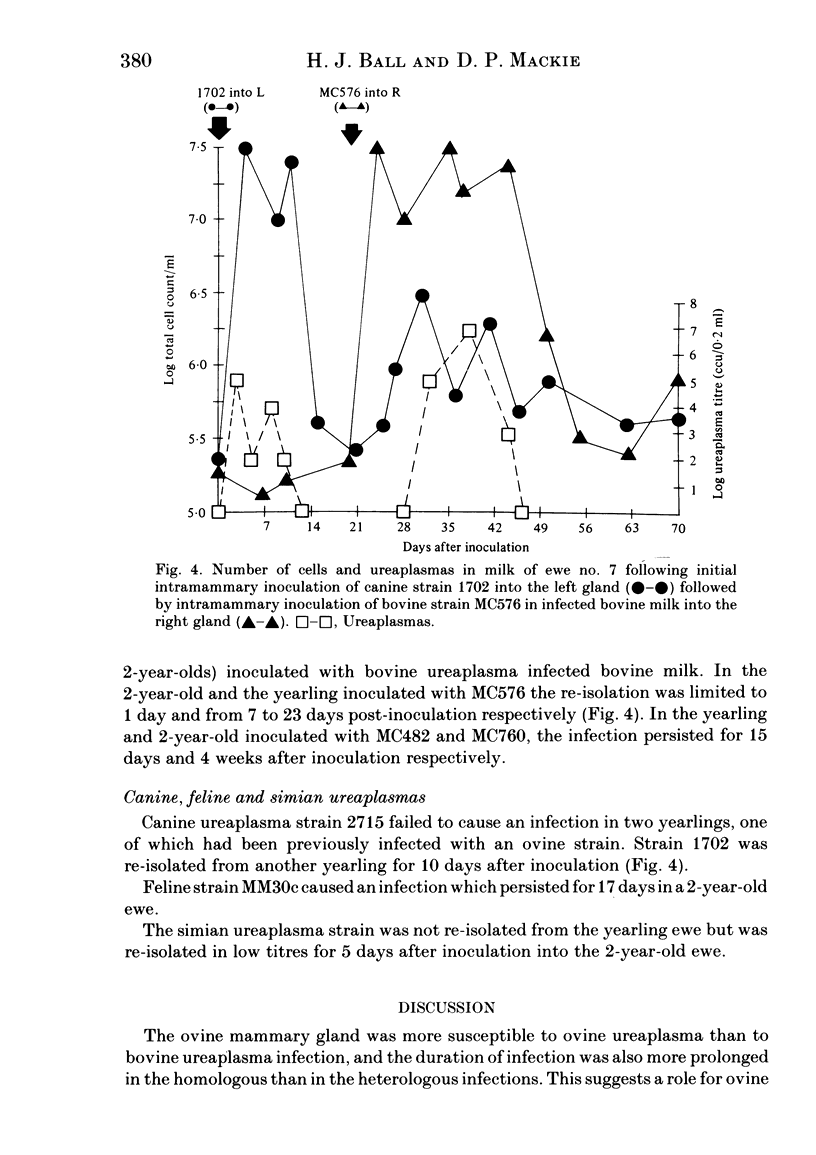
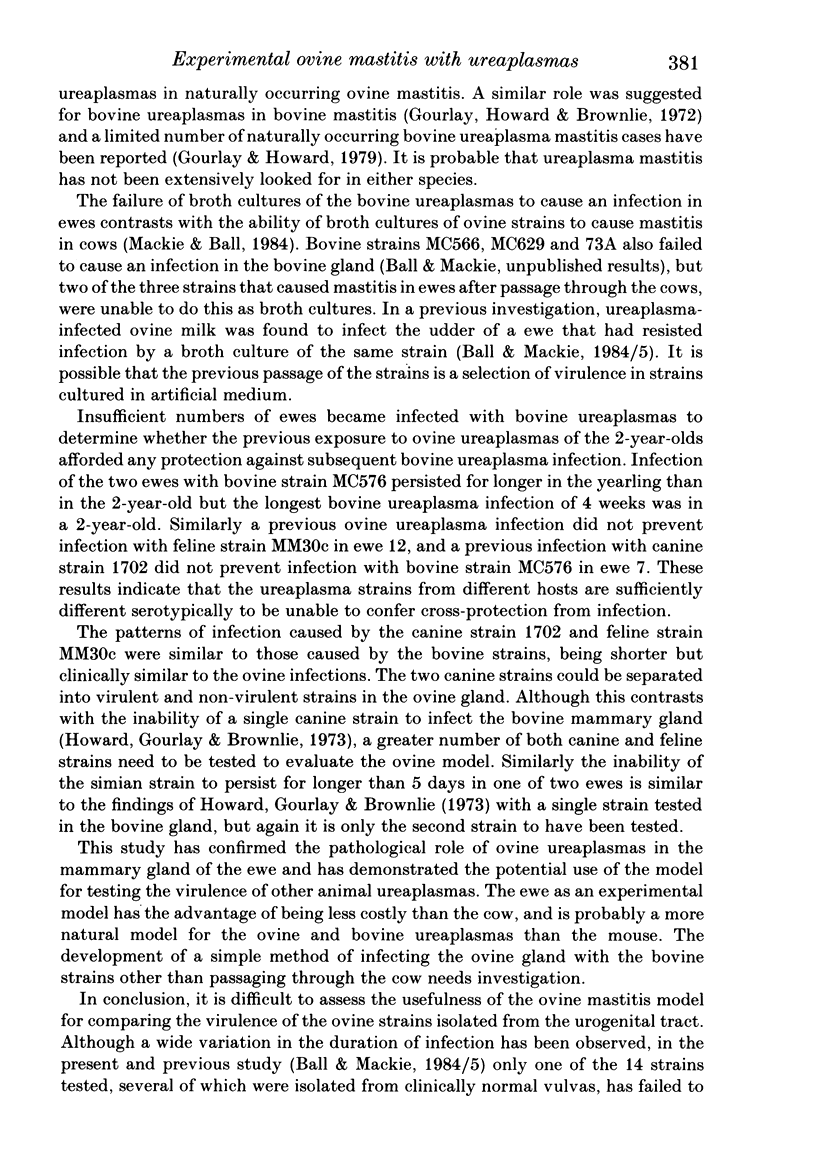
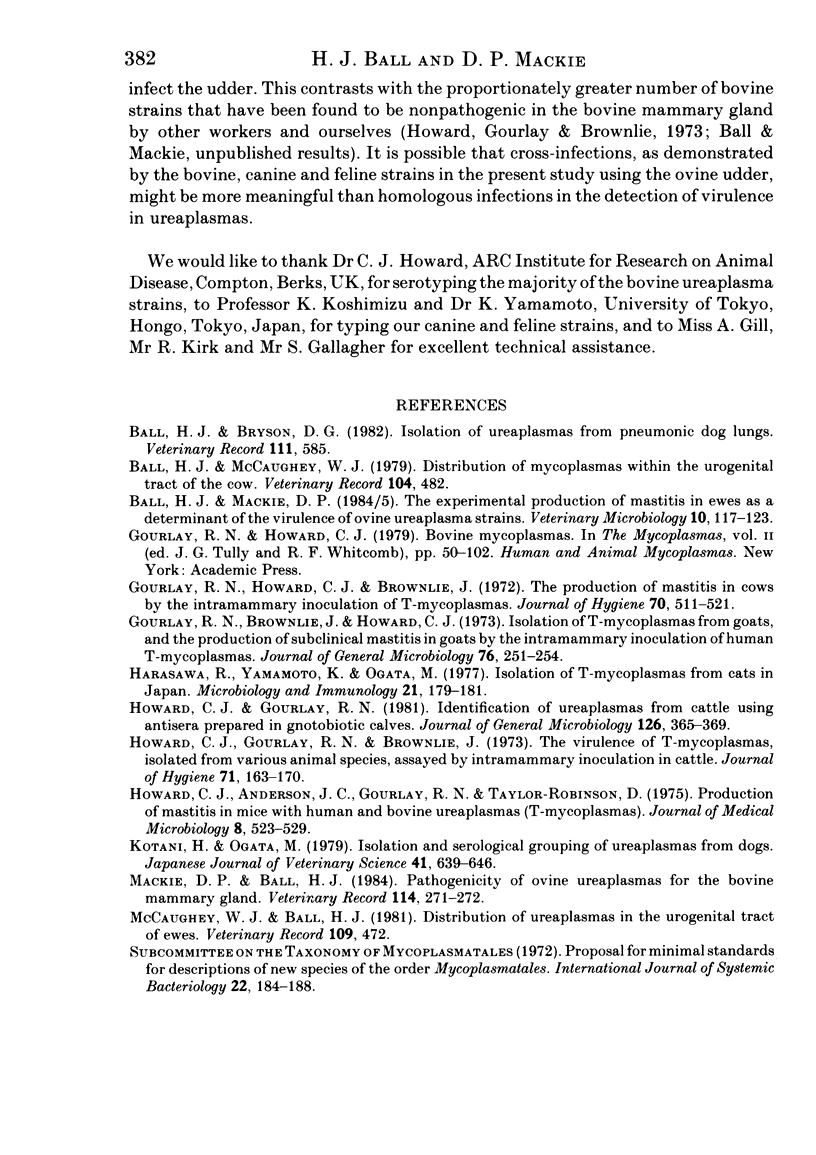
Selected References
These references are in PubMed. This may not be the complete list of references from this article.
- Ball H. J., Bryson D. G. Isolation of ureaplasmas from pneumonic dog lungs. Vet Rec. 1982 Dec 18;111(25-26):585–585. [PubMed] [Google Scholar]
- Ball H. J., Mackie D. P. The experimental production of mastitis in ewes as a determinant of the virulence of ovine ureaplasma strains. Vet Microbiol. 1985 Jan;10(2):117–123. doi: 10.1016/0378-1135(85)90013-6. [DOI] [PubMed] [Google Scholar]
- Ball H. J., McCaughey W. J. Distribution of mycoplasmas within the urogenital tract of the cow. Vet Rec. 1979 May 26;104(21):482–483. doi: 10.1136/vr.104.21.482. [DOI] [PubMed] [Google Scholar]
- Gourlay R. N., Brownlie J., Howard C. J. Isolation of T-mycoplasmas from goats, and the production of subclinical mastitis in goats by the intramammary inoculation of human T-mycoplasmas. J Gen Microbiol. 1973 May;76(1):251–254. doi: 10.1099/00221287-76-1-251. [DOI] [PubMed] [Google Scholar]
- Gourlay R. N., Howard C. J., Brownlie J. The production of mastitis in cows by the intramammary inoculation of T-mycoplasmas. J Hyg (Lond) 1972 Sep;70(3):511–521. doi: 10.1017/s0022172400063099. [DOI] [PMC free article] [PubMed] [Google Scholar]
- Harasawa R., Yamamoto K., Ogata M. Isolation of T-mycoplasmas from cats in Japan. Microbiol Immunol. 1977;21(3):179–181. doi: 10.1111/j.1348-0421.1977.tb00279.x. [DOI] [PubMed] [Google Scholar]
- Howard C. J., Anderson J. C., Gourlay R. N., Taylor-Robinson D. Production of mastitis in mice with human and bovine ureaplasmas (T-mycoplasmas). J Med Microbiol. 1975 Nov;8(4):523–529. doi: 10.1099/00222615-8-4-523. [DOI] [PubMed] [Google Scholar]
- Howard C. J., Gourlay R. N., Brownlie J. The virulence of T-mycoplasmas, isolated from various animal species, assayed by intramammary inoculation in cattle. J Hyg (Lond) 1973 Mar;71(1):163–170. doi: 10.1017/s0022172400046337. [DOI] [PMC free article] [PubMed] [Google Scholar]
- Howard C. J., Gourlay R. N. Identification of ureaplasmas from cattle using antisera prepared in gnotobiotic calves. J Gen Microbiol. 1981 Oct;126(2):365–369. doi: 10.1099/00221287-126-2-365. [DOI] [PubMed] [Google Scholar]
- Kotani H., Ogata M. Isolation and serological grouping of ureaplasmas from dogs. Nihon Juigaku Zasshi. 1979 Dec;41(6):639–646. doi: 10.1292/jvms1939.41.639. [DOI] [PubMed] [Google Scholar]
- Mackie D. P., Ball H. J. Pathogenicity of ovine ureaplasmas for the bovine mammary gland. Vet Rec. 1984 Mar 17;114(11):271–272. doi: 10.1136/vr.114.11.271. [DOI] [PubMed] [Google Scholar]
- McCaughey W. J., Ball H. J. Distribution of ureaplasmas in the urogenital tract of ewes. Vet Rec. 1981 Nov 21;109(21):472–472. doi: 10.1136/vr.109.21.472. [DOI] [PubMed] [Google Scholar]


